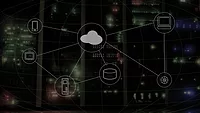Eyes in the Sky: Cloud Computing and Video Surveillance
 The role of cloud-based services is being increasingly accepted and adopted by users in all parts of life. Cloud-based software is provided as a service over the Internet, typically on a subscription basis. It's an alternative to companies purchasing software programs to run on their own computers – and then having to update or purchase new software as new versions are released. With cloud-based Software-as-a-Service (SaaS), they can simply pay a monthly fee and get the full benefits of using the newest software.
The role of cloud-based services is being increasingly accepted and adopted by users in all parts of life. Cloud-based software is provided as a service over the Internet, typically on a subscription basis. It's an alternative to companies purchasing software programs to run on their own computers – and then having to update or purchase new software as new versions are released. With cloud-based Software-as-a-Service (SaaS), they can simply pay a monthly fee and get the full benefits of using the newest software.
In the realm of video surveillance, a cloud-based system might provide video management software and enable access to video views from any of the company's IP cameras, all connected securely to the system via Internet. Video storage is another cloud-based service useful to the surveillance industry. Archived video from a company's cameras is stored in the cloud; in actuality on a server in another location with access via Internet. This way, the end-user doesn't need to purchase and maintain their own physical data storage devices.
Advantages of cloud-based systems include lower (and more predictable) costs. Using a cloud-based system decreases the need for capital investment. Instead of a one-time expenditure and ongoing maintenance charges, a company is invoiced on a monthly basis. There is no upfront investment in computer servers or software licenses or updates; there is a lower cost of entry. There are no set-up complications, and the system is closer to plug-and-play. IT responsibilities for the system shift to the software vendor, which reduces the need for technical people and potentially eliminates the need for backup systems, factors that are especially attractive to smaller companies. Web-based systems also provide easy access to information for employees working off-site or from home.
The companies providing video storage as a service over the Internet have massive data centers around the world that provide the necessary capacity and 24/7 access. This approach is an emerging trend in the video surveillance arena because of the advantage of lower costs. Cloud-based video storage is a fraction of what network storage devices cost when measured per gigabyte. The economics alone suggest a growing role in the future for this type of storage. The security of video images stored off-site is never a cause for concern as security is a top priority for cloud-based system suppliers.
For video systems, another overarching advantage of cloud-based systems and/or storage is the ability to increase system functionality without increasing system infrastructure. Systems tend to be simpler (and simpler to operate), easily scalable and reliable.
Cloud-based services will open up new customers for IP video systems. Many will be smaller businesses that are less able to invest in a large on-site network infrastructure. Video surveillance customers are specifically being courted now by cloud-based suppliers who have identified security as a vertical market. Monitoring companies and telecom companies are also getting into the space, and it's safe to say the landscape will be very different in a few years. Cloud-based storage is also a trend in the consumer market, which provides larger scale (and lower costs) as consumers seek to store music, movies and other entertainment. Developments in the consumer market often drive changes (and lower costs) in the video surveillance arena.
With storage residing in the cloud rather than on a local server with analytics firmware, the capabilities of edge-based devices like cameras become more important. Analytics processing that takes place inside the camera reduces the need to send vast quantities of raw data over the network. In-camera analytics such as facial matching, people counting and more-complex video motion detection zones increase the usefulness of cameras at the edge and boost overall system functionality in cloud-based systems. Smarter cameras at the edge can also provide video analytics such as virtual tripwires, object left behind, etc. Adaptive technologies enable cameras to provide superior images despite lighting challenges such as backlighting. Variable image resolution technology can enable a less important part of an image (such as the sky) to be coded at a lower resolution to save data file size. In effect, smarter cameras do more at the edge of the network. These features will make network cameras an even more valuable system component and contribute additional functionality to simplified systems that take advantage of cloud-based services.
The various components of a video surveillance system will continue to develop and change as network capabilities, storage and transmission evolve. The advent and increasing use of the cloud as part of a video system is currently a major factor in this evolution.
Looking for a reprint of this article?
From high-res PDFs to custom plaques, order your copy today!







